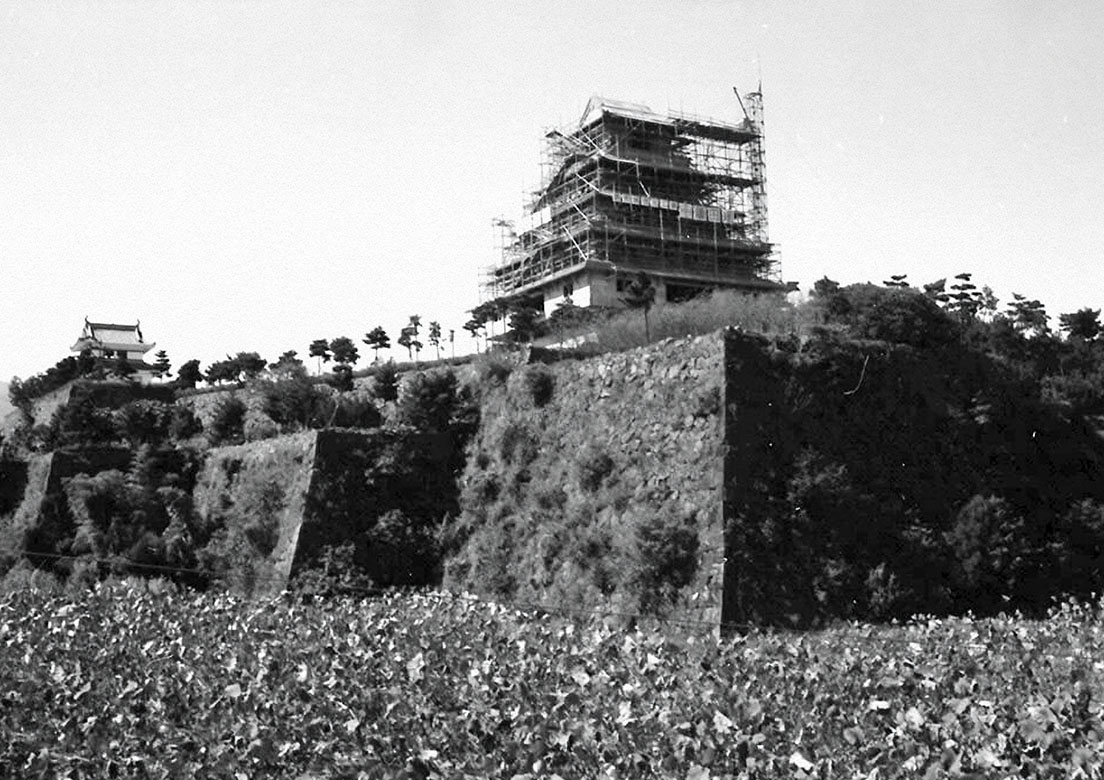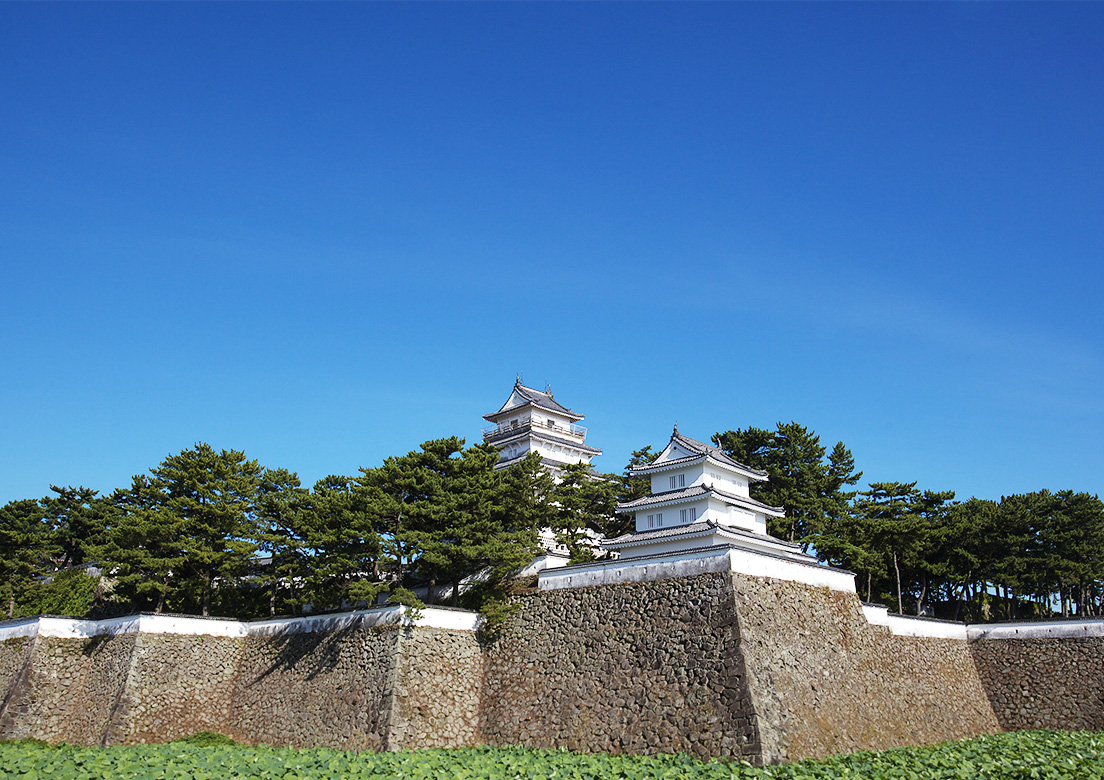About Shimabara Castle
Introduction
Shimabara Castle was built by Matsukura Bungo-mamoru Shigemasa over a period of about seven years starting in 1618 (4th years Genwa). It was a magnificent castle built in the Azuchi-Momoyama period construction style, with a five-story castle tower at its core and large and small turrets at key locations.
Since then, the castle has been the residence of 19 generations of four clans for approximately 250 years, giving birth to numerous stories. However, it was regrettably dismantled during the Meiji Restoration. Shimabara Castle, which lost all its buildings including the castle tower, has withstood the wind and snow for many years, leaving only the stonewalls and the moat.
The citizens of Shimabara longed for the restoration of the “castle” as their spiritual center. Their enthusiasm bore fruit in 1960 (35th years Syouwa) with the restoration of the west turret, and in 1964 (Syowa 39) with the restoration of the castle tower. the buliding that was changed for musium at that time is exhibiting some material that is “christan History Materials”,”Local History Material” and “Folk History Materials” at each floors. Later, in 1972 (47th years Syouwa) , the “Tatsumi no Yagura” was restored and the “Nishimochi Memorial Hall” was opened to exhibit sculptures by Mr. Nishimochi Kitamura, a local native and recipient of the Order of Culture. Furthermore, in 1996 (Heisei 8), the “Tourism Reconstruction Hall” was opened to introduce the Unzen Fugendake eruption disaster with images and various materials.
White castle tower against the blue sky
The view of Shimabara Castle from the ruins of the Ote-mon Gate is wonderful! The white five-story castle tower stands out well against the blue sky. About 15 meters above the moat, there is a tiled white-walled wall with a narrow arrowhead space, above which is the three-story Tatsumi Yagura, the Ushi-Tora Yagura on the right, and the Nishi Yagura on the left. The five-story white-walled fence with arrow-slits and tiled roofing rises 35 meters above the tower.
The stone walls are gently curved and stand nearly perpendicular to the ground, and even though they are 390 years old, they do not seem to have been affected by the earthquake. There are thirteen bends, or butt angles, that can be seen there. This is not only to eliminate blind spots for defense purposes, but also to give the castle authority, which also makes it aesthetically pleasing. The moat is also beautiful. In the spring, the irises, and in the summer, the lotus flowers are refreshing and colorful. In winter, the clear sky and the castle tower can be seen among the dead leaves of the lotus trees. The castle was built by Shigemasa Matsukura Bungo-mamoru, a master of military tactics and castle construction.
There used to be a small mountain here called Moridake, and it took tens of thousands of people and many years of work before Shimabara Castle was built in the 1620s. At the same time, Shimabara Castle Town was developed. The castle was biased to the south, with the Honmaru (main circle), where the 33-meter (17-ken) castle tower soared, and the Ninomaru (second circle) was connected to the northern neighbor by a corridor bridge. Further to the north was the San-no-maru, where the palace was located. The outer wall was about 360 meters east to west and 1,260 meters north to south. It was surrounded by a 3,900 meter-long wall, and 16 turrets of various sizes were placed at key points. The castle was built with a superior’s residence inside and a subordinate’s residence outside, which seems to have been excessive for a daimyo of 40,000 koku.
For 250 years since its construction, the castle has flourished as the center of the Shimabara clan’s administration. It also served as a military base, especially during the reign of the Matsudaira clan, when it had an important role as a hidden trustee of Kyushu. Shimabara Castle was abandoned after the Meiji Restoration. Even the standing trees were sold to the private sector. The castle tower, which survived the Shimabara Rebellion and the Kansei Incident, was demolished in 1876 (9th year of Meiji). Later, the Honmaru was turned into farmland, and only the castle tower remained. The San-no-maru area was used as a school site, and the Daiichi Elementary School and Shimabara Junior High School (later Shimabara High School) were opened on the site of the vast palace, and for a time a girls’ school, a commercial school, and the Daiichi Junior High School were also established. The present Shimabara Castle was built in 1964, and was restored as it was when it was built, based on the clan diary, various records, and pictures of Shimabara Castle from the end of the Taisho period. It is visited by 200,000 to 300,000 people annually, making it one of Shimabara’s most popular tourist attractions. The museum is home to various types of archives.


